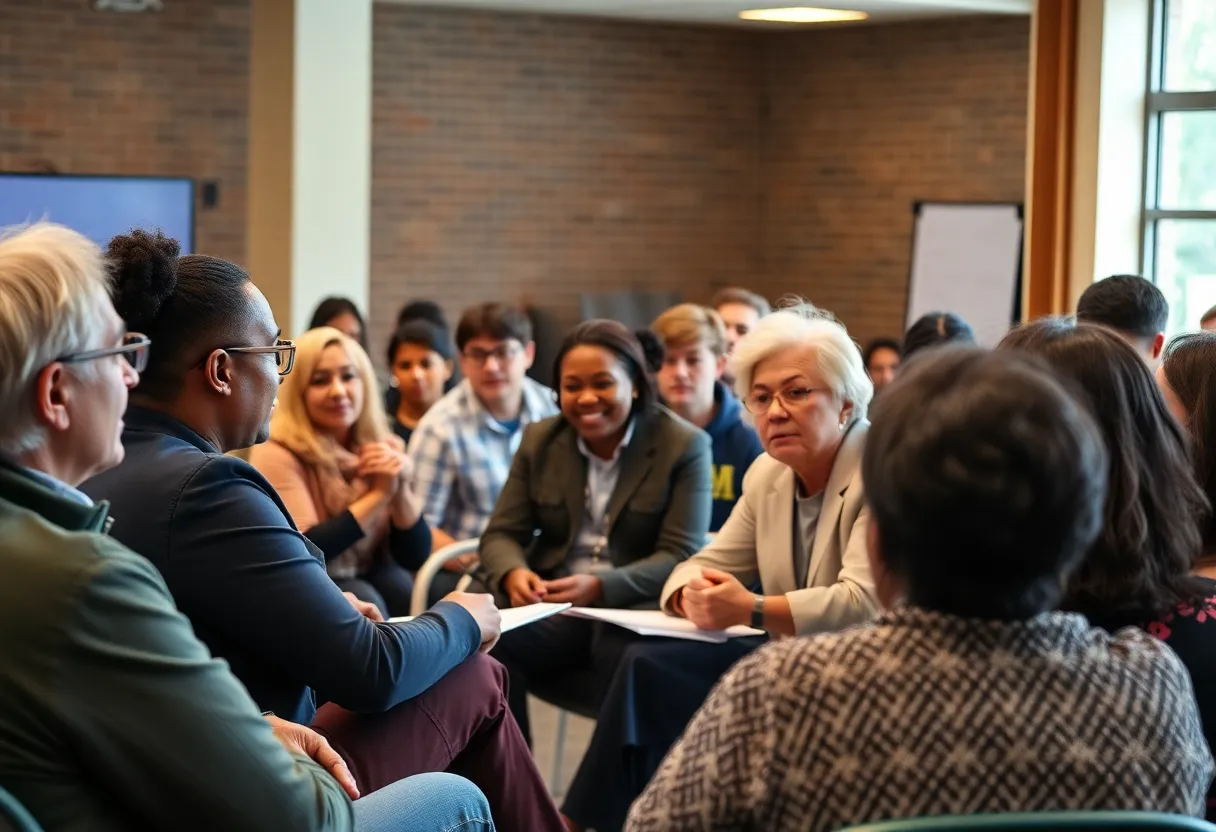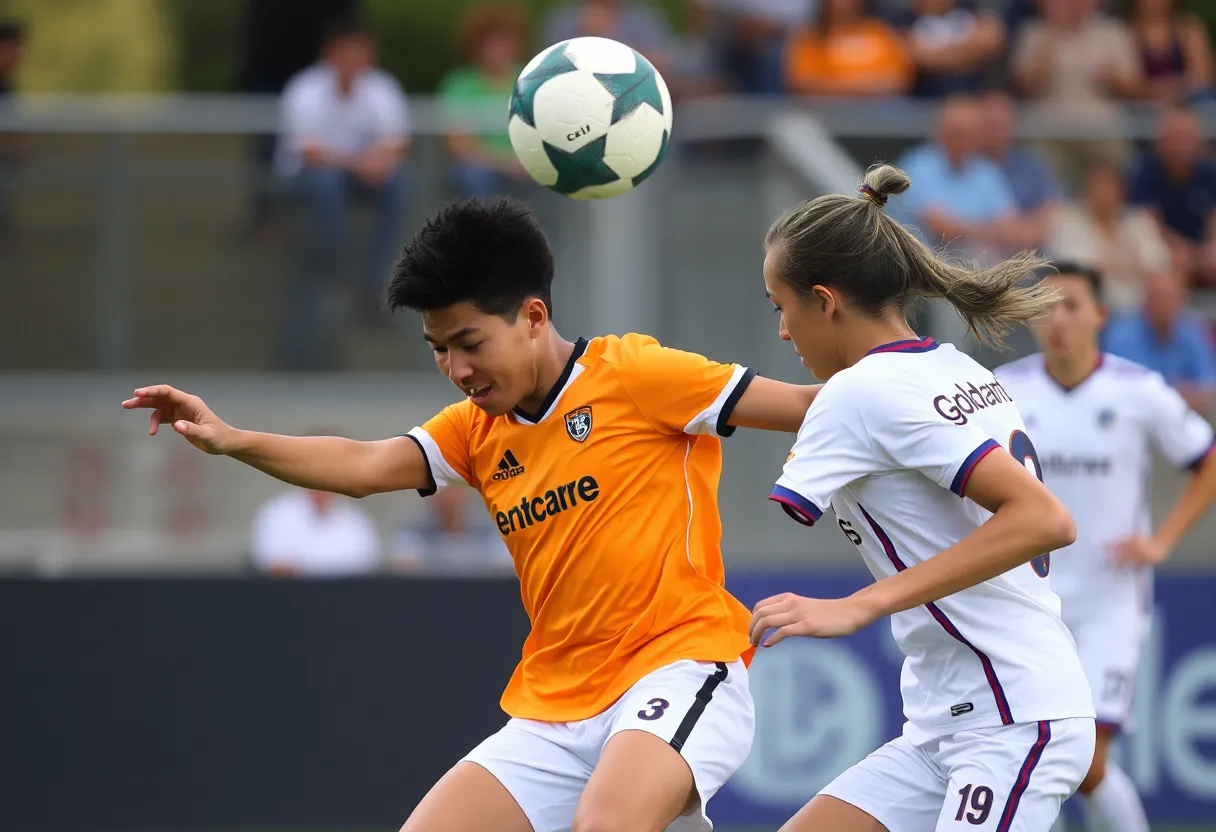Buffalo, NY, October 26, 2025
As the November election approaches, the race for the Buffalo Board of Education’s West District seat is heating up, with candidates addressing vital issues such as school funding and mental health support for students. Recent community forums revealed contrasting priorities between the incumbent, who focuses on expanding STEM programs, and the challenger, who emphasizes mental health investments in the wake of the pandemic. With approximately 10,000 students affected, the electoral outcome could significantly impact educational policies and community engagement.
Buffalo Board of Education West District Race Heats Up Ahead of November Election
Buffalo, NY – The race for the Buffalo Board of Education’s West District seat has gained significant momentum as the November election approaches, with candidates addressing critical issues like school funding and equity during a recent community forum attended by many residents.
The forum highlighted the contrasting priorities of the incumbent and challenger, setting the stage for what appears to be a closely contested election. With the district serving approximately 10,000 students across diverse neighborhoods on Buffalo’s west side, the outcome could influence a wide range of educational policies for years to come. Early indicators suggest high voter turnout, reflecting the community’s strong interest in shaping the future of local schools.
Candidates Outline Key Priorities
During the event, discussions centered on improving educational opportunities amid ongoing challenges. The incumbent candidate focused on achievements in expanding STEM programs, which have aimed to prepare students for technology-driven careers through enhanced curriculum and resources. These initiatives have been credited with boosting enrollment and performance in science, technology, engineering, and math subjects across multiple schools in the district.
In response, the challenger emphasized the need for greater investment in mental health support for students, particularly in the aftermath of the pandemic. This platform addresses the rising demand for counseling services, peer support systems, and teacher training to handle emotional and psychological needs. The candidate argued that such measures are essential to help students recover and thrive in a post-crisis educational environment, where disruptions have affected attendance and academic progress.
Both approaches underscore the broader debate on how to allocate limited resources effectively, balancing academic advancement with holistic student well-being. Community members at the forum expressed appreciation for the focus on these areas, indicating a desire for policies that address both immediate and long-term needs.
Community Engagement and Voter Expectations
Local leaders have actively encouraged resident participation in the electoral process, highlighting the direct impact of the Board’s decisions on daily school operations and student outcomes. The West District encompasses a mix of urban and suburban areas, home to families from various socioeconomic and cultural backgrounds. Issues like equitable funding distribution—ensuring schools in underserved neighborhoods receive adequate support—emerged as a recurring theme, with calls for transparent budgeting to reduce disparities in facilities and programs.
Early polling data points to a tight race, with neither candidate holding a clear lead. This competitiveness has spurred increased voter registration drives and informational sessions, aiming to educate the public on the stakes involved. Residents have voiced concerns about teacher retention, curriculum inclusivity, and safe learning environments, all of which could be influenced by the election results.
Background on the West District and Its Challenges
The Buffalo Board of Education oversees one of the largest school districts in New York State, navigating complex issues such as budget constraints, demographic shifts, and evolving educational standards. The West District, in particular, serves a population that reflects Buffalo’s diversity, including significant immigrant and low-income communities. Over the past few years, the district has faced hurdles like declining enrollment in some areas and the need to adapt to hybrid learning models, which have strained resources.
Historically, Board elections in Buffalo have drawn attention for their role in addressing systemic inequities. Past decisions have led to investments in bilingual education and after-school programs, but critics argue more progress is needed to close achievement gaps. The current race builds on these efforts, with candidates proposing targeted solutions to enhance equity and funding efficiency.
As the election date nears, community forums and debates are expected to continue, providing voters with opportunities to weigh the platforms. The Board’s composition will ultimately determine the direction of initiatives that affect not just the West District but the entire Buffalo Public Schools system, influencing everything from infrastructure upgrades to partnerships with local organizations.
This election comes at a pivotal time for education in Buffalo, where recent state funding increases offer potential for growth, yet local allocation remains a point of contention. With high stakes for students and families, the race exemplifies the vital role community involvement plays in educational governance.
FAQ
What is the focus of the Buffalo Board of Education’s West District race?
The race centers on debates over school funding and equity, with candidates discussing improvements for the district’s students.
Who are the main candidates in the West District election?
The incumbent emphasizes a record on STEM programs, while the challenger prioritizes mental health support post-pandemic.
How many students does the West District serve?
The district serves approximately 10,000 students across diverse neighborhoods in Buffalo’s west side.
What is the expected voter turnout for this election?
Voter turnout is expected to be high, with early polls indicating a tight race between the candidates.
Why are community leaders encouraging resident engagement?
Community leaders are urging residents to engage due to the significant impact the election will have on district policies and the 10,000 students served.
How might the election outcome affect Buffalo schools?
The election will shape educational policies, including funding allocation and support programs, for diverse neighborhoods in Buffalo’s west side.
Election Key Features Chart
| Feature | Description |
|---|---|
| District Served | West District, Buffalo, NY – Approximately 10,000 students in diverse neighborhoods |
| Main Issues | School funding, equity, STEM programs, mental health support post-pandemic |
| Candidate Focus – Incumbent | Record on expanding STEM programs for academic preparation |
| Candidate Focus – Challenger | Investment in mental health services for student recovery |
| Election Timeline | Intensifying race ahead of November election |
| Voter Outlook | High expected turnout; tight race per early polls |
| Community Role | Leaders urging engagement to influence policies for students |
Deeper Dive: News & Info About This Topic
HERE Resources
Syracuse Defeats Buffalo in Exhibition Basketball Game
Clarence Middle School Celebrates Inaugural Camp Day
Elementary School Organizes Surprise Wedding for Principal
M&T Bank Declares Dividends for Preferred Stocks
Buffalo Wine Bars Announce Downtown Expansion Plans
Students Surprise Principal with Wedding Ceremony
Buffalo Board of Education Forms School Closure Committee
Buffalo’s Commitment to Enhance Teacher Diversity for Student Success
Buffalo Public Schools Concerned About Federal Budget Cuts to Special Education
Sailboat Capsizes in Niagara River Near Buffalo





